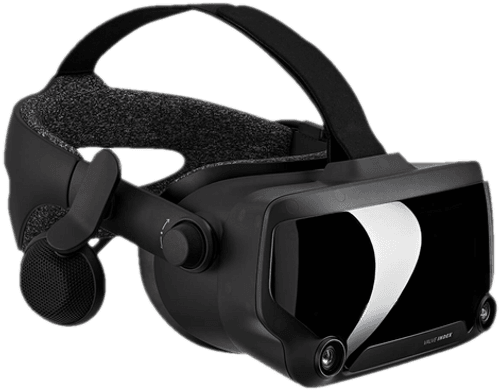The virtual reality industry is growing rapidly, with VR hardware set to be worth over $16 billion by 2021. As a result of this, we’ve seen a number of different VR headsets released over the past few years. These devices all have their own unique features to help them stand out from the competition and appeal to different users. There are now so many options that choosing one can be overwhelming for potential buyers! To help you decide which one is right for you, here is an in-depth look into the differences between the Oculus Rift vs Valve Index: VR headsets.
If you are wondering if the Oculus Rift (2016) is still worth it, read our in-depth review on the Oculus Rift (2016).
What is the Oculus Rift?

The Oculus Rift is an immersive virtual reality headset that was released in 2016. This platform is produced by Oculus, a company that was acquired by Facebook in 2014 for $2 billion. Oculus Rift was, at one point, the most popular VR headset in the world, having sold over 2 million units up to 2018. The device features a high-quality display, as well as full-motion tracking, allowing users to move around freely while in VR. The Oculus Rift comes with two motion controllers that allow you to interact with the virtual world, which can be used alongside the headset’s sensors to track your movements. This allows you to walk around and explore virtual environments in ways that weren’t possible with other VR headsets.
Oculus Rift Specs
- Storage: N/A
- Resolution: 2160 x 1200 per eye
- Refresh Rate: 90 Hz
- Ergonomics: Adjustable, padded
- Mic: Yes
- Glasses Friendly: Yes
- Field of View: 110 degrees
- Connectivity: USB
Pros
- Still holds up in resolution
- Decent refresh rate
- Still very powerful
- Wider field of view
Cons
- Older and may not support the newer features
- Clunkier than newer VR headsets
- Not nearly as powerful as other headsets
What is the Valve Index?

The Valve Index is a high-end virtual reality headset released in 2020 by Valve. It is a tethered headset that is designed to offer a highly immersive VR experience. Consider the Valve Index as the top-tier option for consumer VR headsets. The Index comes with a set of controllers that allow you to interact with the virtual world, as well as a built-in microphone for voice commands. It features a high-resolution display, as well as integrated eye-tracking sensors that are used for foveated rendering. This technology helps to improve the visual fidelity of the visuals in the headset by rendering the most important parts of a scene in high detail while using lower visual fidelity for less important elements.
Valve Index Specs
- Storage: N/A
- Resolution: 2448 x 2448 per eye
- Refresh Rate: 90 Hz – 120 Hz
- Ergonomics: Adjustable, padded
- Mic: Yes
- Glasses Friendly: Yes
- Field of View: 120 degrees
- Connectivity: Bluetooth, USB-C
Pros
- Good Tracking System
- Incredible field of view
- Very powerful
- Steady refresh rate
- Smooth experience
Cons
- Expensive
- Need a high-end PC
- Still tethered
Conclusion: Which one is better?
Without a doubt, the Valve Index is the better VR headset in every way. If you can afford that premium price tag, the Valve Index is top of the line and delivers the best experience. If price is an issue for you, the Oculus Rift is still a premium VR headset that still holds up today. You can find the Oculus Rift headsets for a way cheaper price tag and in great condition. If you have the funds, get the Valve Index but if you need a premium headset without breaking the bank, the Oculus is still a solid VR.
